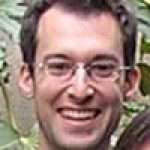Link to Pubmed [PMID] – 18578013
Mol. Ther. 2008 Aug;16(8):1372-81
Cystinosis belongs to a growing class of lysosomal storage disorders (LSDs) caused by defective transmembrane proteins. The causative CTNS gene encodes the lysosomal cystine transporter, cystinosin. Currently the aminothiol cysteamine is the only drug available for reducing cystine storage but this treatment has non-negligible side effects and administration constraints. In this study, for the first time, we report viral vector-mediated CTNS gene transfer and evaluate the feasibility of this strategy as a complementary treatment. Initially, we transduced human CTNS(-/-) fibroblast cell lines and primary murine Ctns(-/-) hepatocyte cultures in vitro and demonstrated that gene transfer can reduce cystine storage. Because of age-related increase in cystine levels, we transduced hepatocytes from young (/=5 months of age) mice. Our in vitro data suggested that the efficiency of correction was age-dependent. We tested these observations in vivo: short-term (1 week) and long-term (4 weeks) CTNS-transduction significantly reduced hepatic cystine levels in young, but not older, Ctns(-/-) mice. Our data provide the proof-of-concept that gene transfer is feasible for correcting defective lysosomal transport, but suggest that, in the case of cystinosis, it could be preventive but not curative in some tissues.

